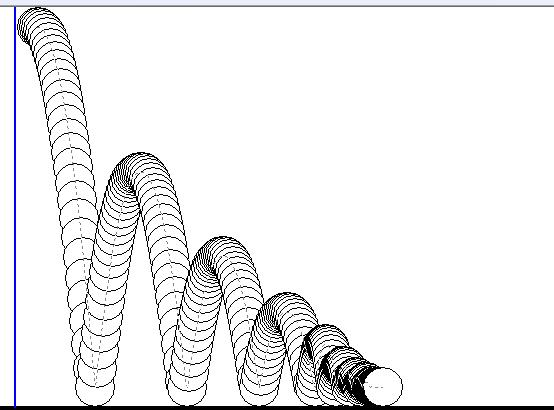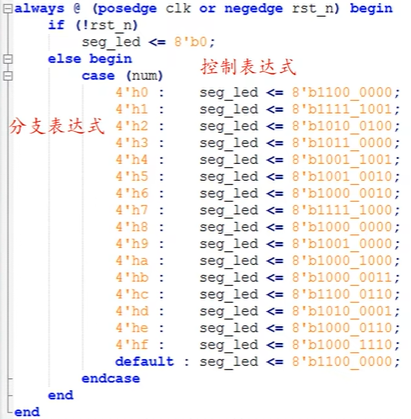模型拆解(二):GeleNet
文章目录
- 一、GeleNet
- 1.1编码器:PVT-v2-b2
- 1.3D-SWSAM:方向-置换加权空间注意力模块
- 1.4KTM:知识转移模块
- 1.5解码器模块
一、GeleNet
论文:Salient Object Detection in Optical Remote Sensing Images Driven by Transformer(基于Transformer的光学遥感图像中的显著目标检测)
论文链接:Salient Object Detection in Optical Remote Sensing Images Driven by Transformer
论文代码:Github
博客链接:Salient Object Detection in Optical Remote Sensing Images Driven by Transformer

1.1编码器:PVT-v2-b2

使用由四个 T r a n s f o r m e r Transformer Transformer编码器构成的PVT作为骨干,输入图像大小为 3 × 352 × 352 3×352×352 3×352×352,可生成四个基本全局特征 f ^ t i \hat{f}^{i}_t f^ti, f ^ t i ∈ R c i × h i × w i \hat{f}^{i}_t∈R^{c_i×h_i×w_i} f^ti∈Rci×hi×wi,其中, c i ∈ { 64 , 128 , 320 , 512 } , h i / w i = 352 2 i + 1 c_i∈\{64,128,320,512\},h_i/w_i=\frac{352}{2^{i+1}} ci∈{64,128,320,512},hi/wi=2i+1352,用于提取具有全局长距离依赖性的四级基本特征嵌入。网络架构:


class GeleNet(nn.Module)中的相关代码:
class GeleNet(nn.Module):def __init__(self, channel=32):super(GeleNet, self).__init__()#定义编码器结构,并加载预训练的PVTv2模型self.backbone = pvt_v2_b2() # [64, 128, 320, 512]path = './model/pvt_v2_b2.pth'save_model = torch.load(path)model_dict = self.backbone.state_dict()state_dict = {k: v for k, v in save_model.items() if k in model_dict.keys()}model_dict.update(state_dict)self.backbone.load_state_dict(model_dict)...def forward(self, x):#获取编码器输出的四张特征图pvt = self.backbone(x)x1 = pvt[0] # 64x88x88x2 = pvt[1] # 128x44x44x3 = pvt[2] # 320x22x22x4 = pvt[3] # 512x11x11
class pvt_v2_b2()中通过在初始化函数__init__()中调用调用PVT-v2架构。
@register_model
class pvt_v2_b2(PyramidVisionTransformerImpr):def __init__(self, **kwargs):super(pvt_v2_b2, self).__init__(patch_size=4, embed_dims=[64, 128, 320, 512], num_heads=[1, 2, 5, 8], mlp_ratios=[8, 8, 4, 4],qkv_bias=True, norm_layer=partial(nn.LayerNorm, eps=1e-6), depths=[3, 4, 6, 3], sr_ratios=[8, 4, 2, 1],drop_rate=0.0, drop_path_rate=0.1)
class PyramidVisionTransformerImpr(nn.Module)中实现了对应结构。
class PyramidVisionTransformerImpr(nn.Module):def __init__(self, img_size=224, patch_size=16, in_chans=3, num_classes=1000, embed_dims=[64, 128, 256, 512],num_heads=[1, 2, 4, 8], mlp_ratios=[4, 4, 4, 4], qkv_bias=False, qk_scale=None, drop_rate=0.,attn_drop_rate=0., drop_path_rate=0., norm_layer=nn.LayerNorm,depths=[3, 4, 6, 3], sr_ratios=[8, 4, 2, 1]):super().__init__()self.num_classes = num_classesself.depths = depths#四个重叠嵌入层self.patch_embed1 = OverlapPatchEmbed(img_size=img_size, patch_size=7, stride=4, in_chans=in_chans,embed_dim=embed_dims[0])self.patch_embed2 = OverlapPatchEmbed(img_size=img_size // 4, patch_size=3, stride=2, in_chans=embed_dims[0],embed_dim=embed_dims[1])self.patch_embed3 = OverlapPatchEmbed(img_size=img_size // 8, patch_size=3, stride=2, in_chans=embed_dims[1],embed_dim=embed_dims[2])self.patch_embed4 = OverlapPatchEmbed(img_size=img_size // 16, patch_size=3, stride=2, in_chans=embed_dims[2],embed_dim=embed_dims[3])#定义随机深度衰减规则dpr = [x.item() for x in torch.linspace(0, drop_path_rate, sum(depths))] # stochastic depth decay rule#定义第一个Transformer Encodercur = 0self.block1 = nn.ModuleList([Block(dim=embed_dims[0], num_heads=num_heads[0], mlp_ratio=mlp_ratios[0], qkv_bias=qkv_bias, qk_scale=qk_scale,drop=drop_rate, attn_drop=attn_drop_rate, drop_path=dpr[cur + i], norm_layer=norm_layer,sr_ratio=sr_ratios[0])for i in range(depths[0])])self.norm1 = norm_layer(embed_dims[0])#定义第二个Transformer Encodercur += depths[0]self.block2 = nn.ModuleList([Block(dim=embed_dims[1], num_heads=num_heads[1], mlp_ratio=mlp_ratios[1], qkv_bias=qkv_bias, qk_scale=qk_scale,drop=drop_rate, attn_drop=attn_drop_rate, drop_path=dpr[cur + i], norm_layer=norm_layer,sr_ratio=sr_ratios[1])for i in range(depths[1])])self.norm2 = norm_layer(embed_dims[1])#定义第三个Transformer Encodercur += depths[1]self.block3 = nn.ModuleList([Block(dim=embed_dims[2], num_heads=num_heads[2], mlp_ratio=mlp_ratios[2], qkv_bias=qkv_bias, qk_scale=qk_scale,drop=drop_rate, attn_drop=attn_drop_rate, drop_path=dpr[cur + i], norm_layer=norm_layer,sr_ratio=sr_ratios[2])for i in range(depths[2])])self.norm3 = norm_layer(embed_dims[2])#定义第四个Transformer Encodercur += depths[2]self.block4 = nn.ModuleList([Block(dim=embed_dims[3], num_heads=num_heads[3], mlp_ratio=mlp_ratios[3], qkv_bias=qkv_bias, qk_scale=qk_scale,drop=drop_rate, attn_drop=attn_drop_rate, drop_path=dpr[cur + i], norm_layer=norm_layer,sr_ratio=sr_ratios[3])for i in range(depths[3])])self.norm4 = norm_layer(embed_dims[3])# classification head# self.head = nn.Linear(embed_dims[3], num_classes) if num_classes > 0 else nn.Identity()#初始化参数self.apply(self._init_weights)#初始化线性层、归一化层、卷积层参数def _init_weights(self, m):if isinstance(m, nn.Linear):trunc_normal_(m.weight, std=.02)if isinstance(m, nn.Linear) and m.bias is not None:nn.init.constant_(m.bias, 0)elif isinstance(m, nn.LayerNorm):nn.init.constant_(m.bias, 0)nn.init.constant_(m.weight, 1.0)elif isinstance(m, nn.Conv2d):fan_out = m.kernel_size[0] * m.kernel_size[1] * m.out_channelsfan_out //= m.groupsm.weight.data.normal_(0, math.sqrt(2.0 / fan_out))if m.bias is not None:m.bias.data.zero_()def init_weights(self, pretrained=None):if isinstance(pretrained, str):logger = 1#load_checkpoint(self, pretrained, map_location='cpu', strict=False, logger=logger)#重置每个块的丢弃路径概率def reset_drop_path(self, drop_path_rate):dpr = [x.item() for x in torch.linspace(0, drop_path_rate, sum(self.depths))]cur = 0for i in range(self.depths[0]):self.block1[i].drop_path.drop_prob = dpr[cur + i]cur += self.depths[0]for i in range(self.depths[1]):self.block2[i].drop_path.drop_prob = dpr[cur + i]cur += self.depths[1]for i in range(self.depths[2]):self.block3[i].drop_path.drop_prob = dpr[cur + i]cur += self.depths[2]for i in range(self.depths[3]):self.block4[i].drop_path.drop_prob = dpr[cur + i]#冻结第一个补丁嵌入层的参数def freeze_patch_emb(self):self.patch_embed1.requires_grad = False#定义不需要权重衰减的参数集合(所有位置嵌入+class token)@torch.jit.ignoredef no_weight_decay(self):return {'pos_embed1', 'pos_embed2', 'pos_embed3', 'pos_embed4', 'cls_token'} # has pos_embed may be better#返回分类器头def get_classifier(self):return self.head#重置分类头以适应新的类别数def reset_classifier(self, num_classes, global_pool=''):self.num_classes = num_classesself.head = nn.Linear(self.embed_dim, num_classes) if num_classes > 0 else nn.Identity()# def _get_pos_embed(self, pos_embed, patch_embed, H, W):# if H * W == self.patch_embed1.num_patches:# return pos_embed# else:# return F.interpolate(# pos_embed.reshape(1, patch_embed.H, patch_embed.W, -1).permute(0, 3, 1, 2),# size=(H, W), mode="bilinear").reshape(1, -1, H * W).permute(0, 2, 1)#定义前向传播特征提取的函数def forward_features(self, x):B = x.shape[0]outs = []# stage 1#使用第一个补丁嵌入层处理输入x,获取特征图x及对应的高H和宽Wx, H, W = self.patch_embed1(x)for i, blk in enumerate(self.block1):x = blk(x, H, W)#归一化x = self.norm1(x)#调整为(B,embed_dim,H,W)x = x.reshape(B, H, W, -1).permute(0, 3, 1, 2).contiguous()outs.append(x)# stage 2x, H, W = self.patch_embed2(x)for i, blk in enumerate(self.block2):x = blk(x, H, W)x = self.norm2(x)x = x.reshape(B, H, W, -1).permute(0, 3, 1, 2).contiguous()outs.append(x)# stage 3x, H, W = self.patch_embed3(x)for i, blk in enumerate(self.block3):x = blk(x, H, W)x = self.norm3(x)x = x.reshape(B, H, W, -1).permute(0, 3, 1, 2).contiguous()outs.append(x)# stage 4x, H, W = self.patch_embed4(x)for i, blk in enumerate(self.block4):x = blk(x, H, W)x = self.norm4(x)x = x.reshape(B, H, W, -1).permute(0, 3, 1, 2).contiguous()outs.append(x)#outs列表包含四个阶段的输出特征图return outsdef forward(self, x):x = self.forward_features(x)return x
1.3D-SWSAM:方向-置换加权空间注意力模块

光学遥感图像中的显著对象往往有一定的方向性,传统卷积并不能很好提取这一特征,对此提出方向-置换加权空间注意力模块( D − S W S A M D-SWSAM D−SWSAM)。首先对不同方向进行定向卷积,再通过通道置换将方向信息均匀融合到每个子特征中,再针对每个子特征生成对应的局部空间注意力图,然后采用加权融合操作生成最终的空间注意力图,以实现一致增强。
在class GeleNet(nn.Module)中通过两个模块实现:
class GeleNet(nn.Module):def __init__(self, channel=32):super(GeleNet, self).__init__()...#方向卷积self.dirConv = DirectionalConvUnit(channel)#置换加权空间注意力模块SWSAMself.DSWSAM_1 = SWSAM(channel)...
class DirectionalConvUnit(nn.Module)中实现了方向卷积。
class DirectionalConvUnit(nn.Module):def __init__(self, channel):super(DirectionalConvUnit, self).__init__()self.h_conv = nn.Conv2d(channel, channel // 4, (1, 5), padding=(0, 2))self.w_conv = nn.Conv2d(channel, channel // 4, (5, 1), padding=(2, 0))# leading diagonalself.dia19_conv = nn.Conv2d(channel, channel // 4, (5, 1), padding=(2, 0))# reverse diagonalself.dia37_conv = nn.Conv2d(channel, channel // 4, (1, 5), padding=(0, 2))def forward(self, x):#依次进行四个方向的卷积操作x1 = self.h_conv(x)x2 = self.w_conv(x)x3 = self.inv_h_transform(self.dia19_conv(self.h_transform(x)))x4 = self.inv_v_transform(self.dia37_conv(self.v_transform(x)))#将结果concat并返回x = torch.cat((x1, x2, x3, x4), 1)return x# Code from "CoANet- Connectivity Attention Network for Road Extraction From Satellite Imagery", and we modified the codedef h_transform(self, x):shape = x.size()x = torch.nn.functional.pad(x, (0, shape[-2]))x = x.reshape(shape[0], shape[1], -1)[..., :-shape[-2]]x = x.reshape(shape[0], shape[1], shape[2], shape[2]+shape[3]-1)return xdef inv_h_transform(self, x):shape = x.size()x = x.reshape(shape[0], shape[1], -1).contiguous()x = torch.nn.functional.pad(x, (0, shape[-2]))x = x.reshape(shape[0], shape[1], shape[2], shape[3]+1)x = x[..., 0: shape[3]-shape[2]+1]return xdef v_transform(self, x):x = x.permute(0, 1, 3, 2)shape = x.size()x = torch.nn.functional.pad(x, (0, shape[-2]))x = x.reshape(shape[0], shape[1], -1)[..., :-shape[-2]]x = x.reshape(shape[0], shape[1], shape[2], shape[2]+shape[3]-1)return x.permute(0, 1, 3, 2)def inv_v_transform(self, x):x = x.permute(0, 1, 3, 2)shape = x.size()x = x.reshape(shape[0], shape[1], -1).contiguous()x = torch.nn.functional.pad(x, (0, shape[-2]))x = x.reshape(shape[0], shape[1], shape[2], shape[3]+1)x = x[..., 0: shape[3]-shape[2]+1]return x.permute(0, 1, 3, 2)
class SWSAM(nn.Module)中实现了置换加权空间注意力模块。传统的空间注意力机制CBAM对所有通道进行全局最大池化和全局平均池化,以全局方式生成空间注意力图谱,这可能会产生不充分的空间注意力图。而分组注意力机制SGE将特征分割成若干子集,并根据每个子特征生成特定的空间注意力图,以进行单独增强。但其只考虑每个子特征的注意力,忽略了不同子特征之间注意力的一致性,导致分组增强的特征缺乏一致性,并不适合SOD任务。而 S W S A M SWSAM SWSAM模块对每个子特征生成局部空间注意力图,然后采用加权融合操作生成最终的空间注意力图,以实现一致增强。
# SWSAM: Shuffle Weighted Spatial Attention Module
class SWSAM(nn.Module):def __init__(self, channel=32): # group=8, branch=4, group x branch = channelsuper(SWSAM, self).__init__()self.SA1 = SpatialAttention()self.SA2 = SpatialAttention()self.SA3 = SpatialAttention()self.SA4 = SpatialAttention()self.weight = nn.Parameter(torch.ones(4, dtype=torch.float32), requires_grad=True)self.sa_fusion = nn.Sequential(BasicConv2d(1, 1, 3, padding=1),nn.Sigmoid())def forward(self, x):#通道置换x = channel_shuffle(x, 4)#特征分割x1, x2, x3, x4 = torch.split(x, 8, dim = 1)#依次生成空间注意力图s1 = self.SA1(x1)s2 = self.SA1(x2)s3 = self.SA1(x3)s4 = self.SA1(x4)#生成相应可训练的权重参数nor_weights = F.softmax(self.weight, dim=0)#融合空间注意力图s_all = s1 * nor_weights[0] + s2 * nor_weights[1] + s3 * nor_weights[2] + s4 * nor_weights[3]#用空间注意力图加强原始特征,并使用残差连接x_out = self.sa_fusion(s_all) * x + xreturn x_out
1.4KTM:知识转移模块

SOD任务中,两个特征的乘积可以揭示两个特征共存的重要信息,有利于协同识别对象。两个特征的求和可以全面地捕捉两个特征所包含的信息。KTM模块采用注意力机制模拟特征的乘积、求和操作来识别和阐述特征图中的突出对象。代码实现:
class KTM(nn.Module):def __init__(self, channel=32):super(KTM, self).__init__()self.query_conv = nn.Conv2d(channel, channel // 2, kernel_size=1)self.key_conv = nn.Conv2d(channel, channel // 2, kernel_size=1)self.value_conv_2 = nn.Conv2d(channel, channel, kernel_size=1)self.value_conv_3 = nn.Conv2d(channel, channel, kernel_size=1)self.gamma_2 = nn.Parameter(torch.zeros(1))self.gamma_3 = nn.Parameter(torch.zeros(1))self.softmax = Softmax(dim=-1)# following DANetself.conv_2 = nn.Sequential(BasicConv2d(channel, channel, 3, padding=1),nn.ReLU(),nn.Dropout2d(0.1, False),nn.Conv2d(channel, channel, 1))self.conv_3 = nn.Sequential(BasicConv2d(channel, channel, 3, padding=1),nn.ReLU(),nn.Dropout2d(0.1, False),nn.Conv2d(channel, channel, 1))self.conv_out = nn.Sequential(nn.Dropout2d(0.1, False),nn.Conv2d(channel, channel, 1))def forward(self, x2, x3): # V#f_sumx_sum = x2 + x3 # Q#f_prox_mul = x2 * x3 # K"""inputs :x : input feature maps( B X C X H X W)returns :out : attention value + input featureattention: B X (HxW) X (HxW)"""m_batchsize, C, height, width = x_sum.size()proj_query = self.query_conv(x_sum).view(m_batchsize, -1, width * height).permute(0, 2, 1)proj_key = self.key_conv(x_mul).view(m_batchsize, -1, width * height)energy = torch.bmm(proj_query, proj_key)attention = self.softmax(energy)proj_value_2 = self.value_conv_2(x2).view(m_batchsize, -1, width * height)proj_value_3 = self.value_conv_3(x3).view(m_batchsize, -1, width * height)out_2 = torch.bmm(proj_value_2, attention.permute(0, 2, 1))out_2 = out_2.view(m_batchsize, C, height, width)out_2 = self.conv_2(self.gamma_2 * out_2 + x2)out_3 = torch.bmm(proj_value_3, attention.permute(0, 2, 1))out_3 = out_3.view(m_batchsize, C, height, width)out_3 = self.conv_3(self.gamma_3 * out_3 + x3)x_out = self.conv_out(out_2 + out_3)return x_out
1.5解码器模块
受级联部分解码器的启发,设计了新型级联部分解码器作为显著性预测器生成预测图。
class PDecoder(nn.Module):def __init__(self, channel):super(PDecoder, self).__init__()self.relu = nn.ReLU(True)self.upsample = nn.Upsample(scale_factor=2, mode='bilinear', align_corners=True)self.conv_upsample1 = BasicConv2d(channel, channel, 3, padding=1)self.conv_upsample2 = BasicConv2d(channel, channel, 3, padding=1)self.conv_upsample3 = BasicConv2d(channel, channel, 3, padding=1)self.conv_upsample4 = BasicConv2d(channel, channel, 3, padding=1)self.conv_upsample5 = BasicConv2d(2*channel, 2*channel, 3, padding=1)self.conv_concat2 = BasicConv2d(2*channel, 2*channel, 3, padding=1)self.conv_concat3 = BasicConv2d(3*channel, 3*channel, 3, padding=1)self.conv4 = BasicConv2d(3*channel, 3*channel, 3, padding=1)self.conv5 = nn.Conv2d(3*channel, 1, 1)def forward(self, x1, x2, x3): # x1: 32x11x11, x2: 32x22x22, x3: 32x88x88,#接受来自D-SWSAM、KTM、SWSAM的输入x1_1 = x1 # 32x11x11x2_1 = self.conv_upsample1(self.upsample(x1)) * x2 # 32x22x22x3_1 = self.conv_upsample2(self.upsample(self.upsample(self.upsample(x1)))) * self.conv_upsample3(self.upsample(self.upsample(x2))) * x3 # 32x88x88x2_2 = torch.cat((x2_1, self.conv_upsample4(self.upsample(x1_1))), 1) # 32x22x22x2_2 = self.conv_concat2(x2_2)x3_2 = torch.cat((x3_1, self.conv_upsample5(self.upsample(self.upsample(x2_2)))), 1) # 32x88x88x3_2 = self.conv_concat3(x3_2)x = self.conv4(x3_2)x = self.conv5(x) # 1x88x88return x
相关文章:

模型拆解(二):GeleNet
文章目录 一、GeleNet1.1编码器:PVT-v2-b21.3D-SWSAM:方向-置换加权空间注意力模块1.4KTM:知识转移模块1.5解码器模块 一、GeleNet 论文:Salient Object Detection in Optical Remote Sensing Images Driven by Transformer&#…...

RTE 2024 隐藏攻略
大家好!想必今年 RTE 大会议程大家都了解得差不多了,这将是一场实时互动和多模态 AI builder 的年度大聚会。 大会开始前,我们邀请了参与大会策划的 RTE 开发者社区和超音速计划的成员们,分享了不同活动的亮点和隐藏攻略。 请收…...

django 部署服务器后 CSS 样式丢失的问题
原因: nginx除了提供反向代理,负载均衡以外,还提供了静(html, css, js)动(视图,模板需要进行解析执行的,或者操作数据库的)分离的功能。 原本django项目中的静态资源存…...

基于springboot的网上服装商城推荐系统的设计与实现
基于springboot的网上服装商城推荐系统的设计与实现 开发语言:Java 框架:springboot JDK版本:JDK1.8 服务器:tomcat7 数据库:mysql 5.7 数据库工具:Navicat11 开发软件:idea 源码获取…...

盘古信息IMS系统助力制造企业释放新质生产力
在全球制造业竞争日益激烈的背景下,提升新质生产力已成为制造企业普遍追求的核心目标。因此,众多制造企业开始对生产流程、管理模式乃至整个企业生态系统进行全面的优化与升级,以期在市场竞争中占据优势地位,迎来更广阔的发展空间…...

ArcGIS 10.8 安装教程
目录 一、ArcGIS10.8二、安装链接三、安装教程四、ArcGIS实战 (一)ArcGIS10.8 1. 概述 ArcGIS 10.8是由美国Esri公司开发的GIS平台,用于处理、分析、显示和管理地理数据,并实现数据共享。它具有新特性和功能,性能更…...

Redis学习笔记(二)--Redis的安装与配置
文章目录 一、Redis的安装1、克隆并配置主机2、安装前的准备工作1.安装gcc2.下载Redis3.上传到Linux 3、安装Redis1.解压Redis2.编译3.安装3.查看bin目录 4、Redis启动与停止1.前台启动2.命令式后台启动3.Redis的停止4.配置式后台启动 二、连接前的配置1、绑定客户端IP2、关闭保…...

软件工程之软件系统设计与软件开发方法
一.软件系统设计 1.体系结构设计就是架构设计,软件设计包含4个方面: 接口(人机界面设计)设计:软件与操作系统、软件与人之间如何交互; 架构(结构)设计:定义软件系统各…...

pip命令行安装pytest 一直报错
其实就是切换不同镜像安装 我最终成功的是阿里云镜像 pip install --trusted-host mirrors.aliyun.com pytest 也可以用其他的 pip install -i https://pypi.org/simple pytest # 或者使用其他的镜像源 pip install -i https://pypi.tuna.tsinghua.edu.cn/simple pytest...

如何在Debian操作系统上安装Doker
本章教程,主要介绍如何在Debian 11 系统上安装Docker。主要使用一键安装Docker脚本和一键卸载脚本来完成。 一、安装Docker #!/bin/bashRED\033[0;31m GREEN\033[0;32m YELLOW\033[0;33m BLUE\033[0;34m NC\033[0mCURRENT_DIR$(cd "$(dirname "$0")…...

代码随想录刷题学习日记
仅为个人记录复盘学习历程,解题思路来自代码随想录 代码随想录刷题笔记总结网址:代码随想录 二叉树的迭代遍历(不使用递归实现遍历) 递归的实现就是:每一次递归调用都会把函数的局部变量、参数值和返回地址等压入调用栈中,递归是通过栈实现…...

OpenText ALM Octane,为您的 DevOps 管道提供质量保证
实现更高水平的敏捷性、可追溯性和可预测性是一个持续的过程。ALM Octane 可帮助您改进开发和测试流程,从而改善整个软件交付价值流中的工作流程。 产品亮点 对基于软件的创新的需求已经加速,扰乱了几乎每个行业,也改变了我们的生活。快速交…...

【python实操】python小程序之参数化以及Assert(断言)
引言 python小程序之参数化以及Assert(断言) 文章目录 引言一、参数化2.1 题目2.2 代码2.3 代码解释 二、Assert(断言)2.1 概念2.1.1 Assert语句的基本语法:2.1.2 基本断言2.1.3 断言函数参数2.1.4 断言前后状态一致 2…...

探索CSS动画下的按钮交互美学
效果演示 这段代码通过SVG和CSS动画创建了一个具有视觉吸引力的按钮,当用户与按钮交互时(如悬停、聚焦或按下),按钮会显示不同的动画效果。 HTML <button class"button"><div class"dots_border"…...

241024-Ragflow离线部署Docker-Rootless环境配置修改
A. 最终效果 B. 文件修改 docker-compose.yml include:- path: ./docker-compose-base.ymlenv_file: ./.envservices:ragflow:depends_on:mysql:condition: service_healthyes01:condition: service_healthyimage: ${RAGFLOW_IMAGE}container_name: ragflow-serverports:- ${…...

网络基础概念:广播域、冲突域与VLAN解析
一、网络基础概念 在现代计算机网络中,广播域、冲突域和虚拟局域网(VLAN)是网络架构和管理的核心概念。了解这些概念对网络性能优化、流量管理和安全性提升至关重要。 二、广播域 1. 定义 广播域是一个网络逻辑区域,在这个区域…...

【MySQL】C语言连接MySQL数据库3——事务操作和错误处理API
目录 1.MySQL事务处理机制 1.1.autocommit 1.2.autocommit的设置与查看 1.3.使用示例 2.事务操作API 2.1.设置事务提交模式——mysql_autocommit() 2.2.提交事务——mysql_commit() 2.3.事务回滚——mysql_rollback() 3.错误处理的API 3.1.返回错误的描述——mysql_er…...

ARM嵌入式学习--第六天(电子电路基础知识)
电子电路基础知识 -基本元器件 -电阻 电阻(Resistance,通常用“R”表示),表示导体对电流的阻碍作用的大小;电阻导体本身的一种特性;超导体没有电阻,作用是用来降压 上拉电阻:将状态…...

JAVA----单例模式
1.单例模式概念: 单例模式是一种设计模式,他的核心是确保一个类只有一个实例,单例模式主要有两种方式:饿汉式与懒汉式 2.饿汉式 饿汉就是一个迫切的意思,类加载就会导致该单实例被创建 饿汉式第一种方式:…...

基于递推式最小二乘法的PMSM参数辨识MATLAB仿真模型
微❤关注“电气仔推送”获得资料(专享优惠) 模型简介 最小二乘法是一种回归估计法,适用于被辨识的参数与系统输出为线性关 系的情况。它是在一定数据量下,基于系统输出误差的平方和最小的准则对参 数进行辨识的方法。此模型通过…...

Opencv中的addweighted函数
一.addweighted函数作用 addweighted()是OpenCV库中用于图像处理的函数,主要功能是将两个输入图像(尺寸和类型相同)按照指定的权重进行加权叠加(图像融合),并添加一个标量值&#x…...

MFC 抛体运动模拟:常见问题解决与界面美化
在 MFC 中开发抛体运动模拟程序时,我们常遇到 轨迹残留、无效刷新、视觉单调、物理逻辑瑕疵 等问题。本文将针对这些痛点,详细解析原因并提供解决方案,同时兼顾界面美化,让模拟效果更专业、更高效。 问题一:历史轨迹与小球残影残留 现象 小球运动后,历史位置的 “残影”…...

2025年渗透测试面试题总结-腾讯[实习]科恩实验室-安全工程师(题目+回答)
安全领域各种资源,学习文档,以及工具分享、前沿信息分享、POC、EXP分享。不定期分享各种好玩的项目及好用的工具,欢迎关注。 目录 腾讯[实习]科恩实验室-安全工程师 一、网络与协议 1. TCP三次握手 2. SYN扫描原理 3. HTTPS证书机制 二…...

pycharm 设置环境出错
pycharm 设置环境出错 pycharm 新建项目,设置虚拟环境,出错 pycharm 出错 Cannot open Local Failed to start [powershell.exe, -NoExit, -ExecutionPolicy, Bypass, -File, C:\Program Files\JetBrains\PyCharm 2024.1.3\plugins\terminal\shell-int…...

在鸿蒙HarmonyOS 5中使用DevEco Studio实现指南针功能
指南针功能是许多位置服务应用的基础功能之一。下面我将详细介绍如何在HarmonyOS 5中使用DevEco Studio实现指南针功能。 1. 开发环境准备 确保已安装DevEco Studio 3.1或更高版本确保项目使用的是HarmonyOS 5.0 SDK在项目的module.json5中配置必要的权限 2. 权限配置 在mo…...

CSS 工具对比:UnoCSS vs Tailwind CSS,谁是你的菜?
在现代前端开发中,Utility-First (功能优先) CSS 框架已经成为主流。其中,Tailwind CSS 无疑是市场的领导者和标杆。然而,一个名为 UnoCSS 的新星正以其惊人的性能和极致的灵活性迅速崛起。 这篇文章将深入探讨这两款工具的核心理念、技术差…...

ZYNQ学习记录FPGA(二)Verilog语言
一、Verilog简介 1.1 HDL(Hardware Description language) 在解释HDL之前,先来了解一下数字系统设计的流程:逻辑设计 -> 电路实现 -> 系统验证。 逻辑设计又称前端,在这个过程中就需要用到HDL,正文…...

Netty自定义协议解析
目录 自定义协议设计 实现消息解码器 实现消息编码器 自定义消息对象 配置ChannelPipeline Netty提供了强大的编解码器抽象基类,这些基类能够帮助开发者快速实现自定义协议的解析。 自定义协议设计 在实现自定义协议解析之前,需要明确协议的具体格式。例如,一个简单的…...

uniapp获取当前位置和经纬度信息
1.1. 获取当前位置和经纬度信息(需要配置高的SDK) 调用uni-app官方API中的uni.chooseLocation(),即打开地图选择位置。 <button click"getAddress">获取定位</button> const getAddress () > {uni.chooseLocatio…...

【SSM】SpringMVC学习笔记7:前后端数据传输协议和异常处理
这篇学习笔记是Spring系列笔记的第7篇,该笔记是笔者在学习黑马程序员SSM框架教程课程期间的笔记,供自己和他人参考。 Spring学习笔记目录 笔记1:【SSM】Spring基础: IoC配置学习笔记-CSDN博客 对应黑马课程P1~P20的内容。 笔记2…...
